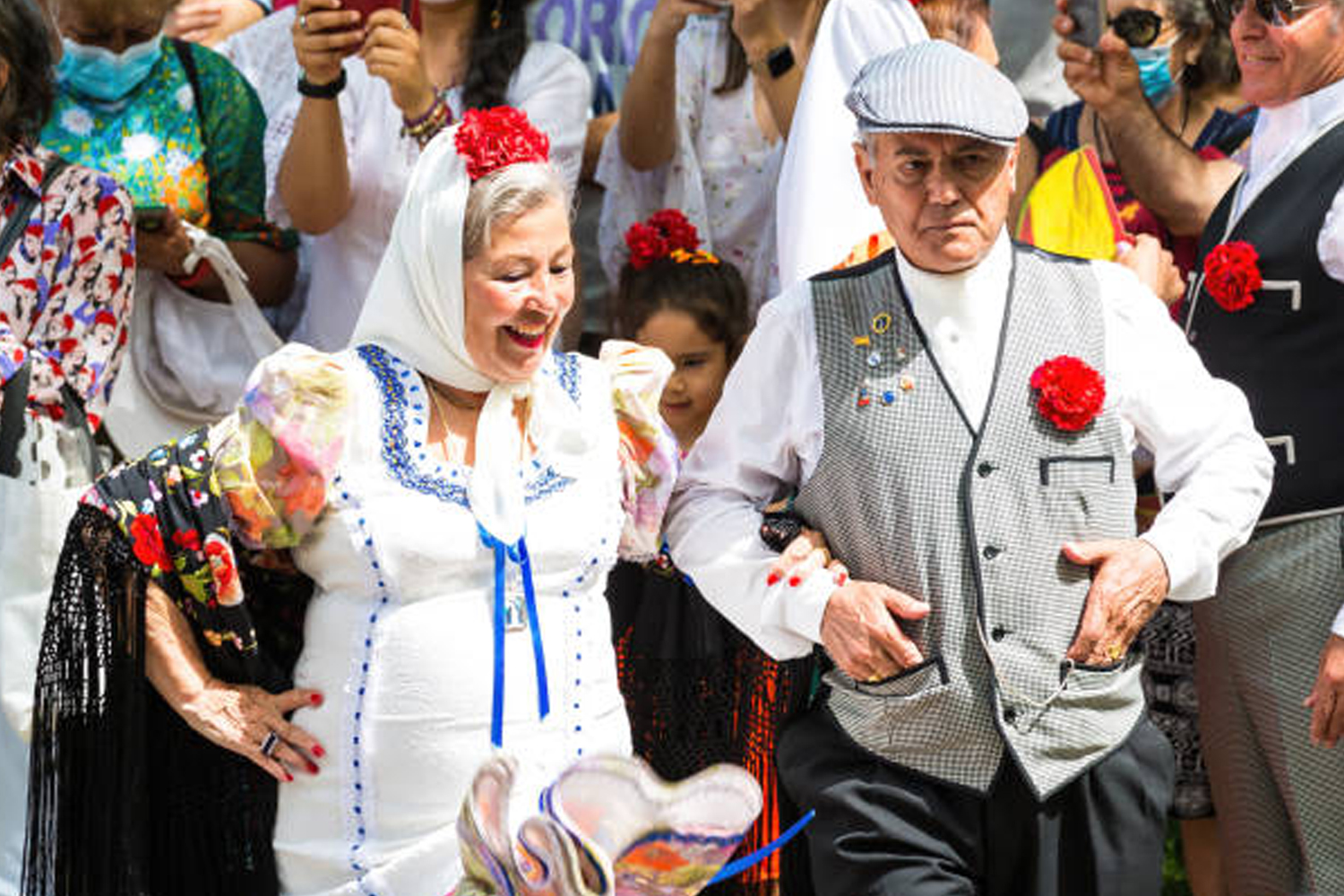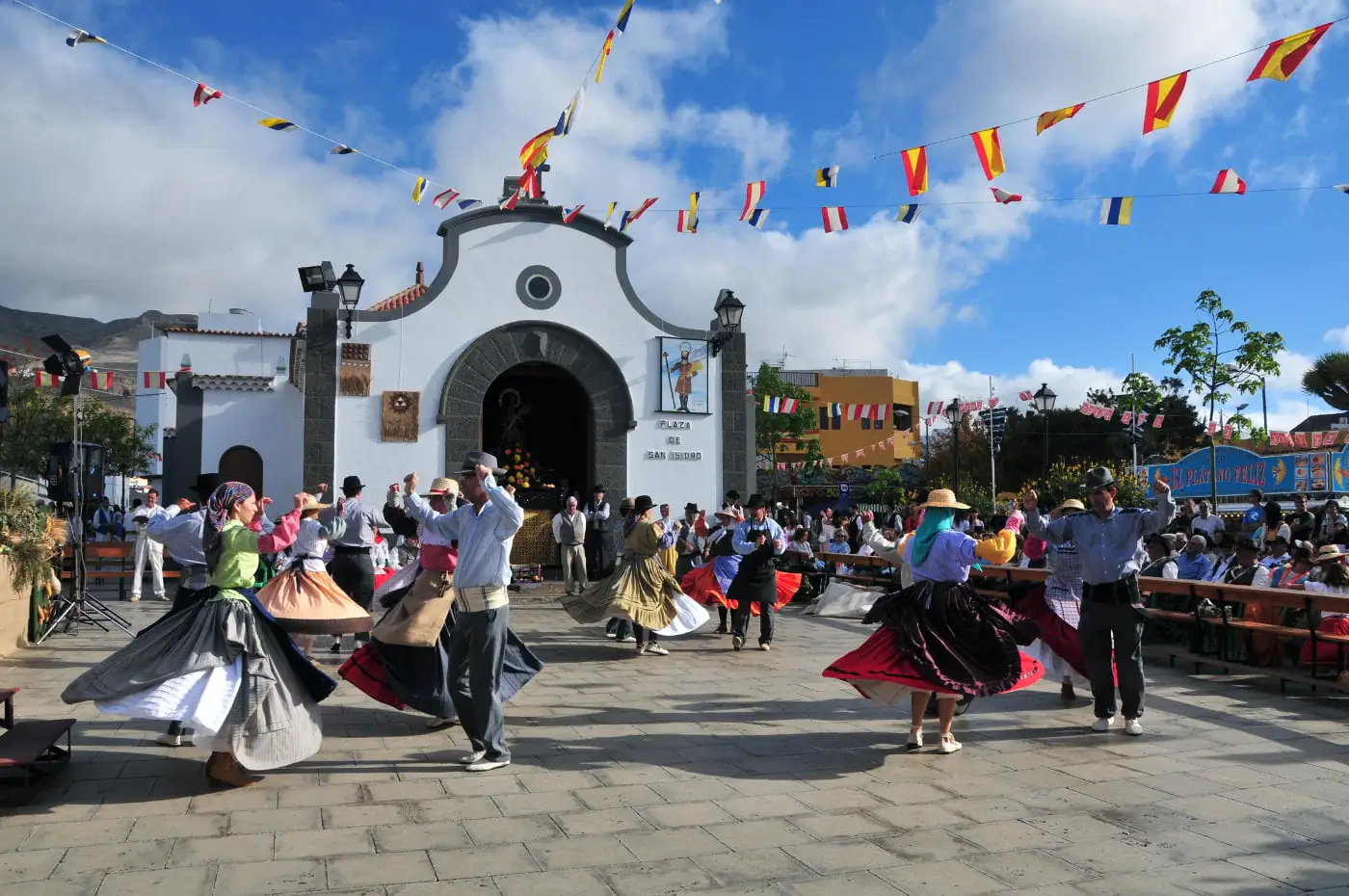Students wishing to travel abroad: Do you wish to engage with a locale whose unique and warm culture extends to every aspect of life? Look no further than beautiful Madrid! In Madrid, even what would otherwise be the smallest and seemingly most insignificant thing absolutely exudes brilliance and a sense of warm Spanish culture. Looking at an area through its clothing and festivities is a wonderful lens to look at a place’s tradition, and it can be seen that many Madrid locals take pride in their own culture, wearing outfits called “chulapo” and “chulapa” for stunning and breathtaking San Isidro celebrations dating back to the 1600’s, celebrating Madrid and the love they hold for their patron saint of the city.

Now, you might be asking yourself a question: “What is a chulapo costume at all? Why should I care?” To help with any confusion, the costume designs change depending on gender. Men wear the chulapo outfit, which is made up of long black pants, a styled flat cap, a grey buttoned vest that covers a clean white collared shirt, sometimes wearing a long white necktie, and most importantly, a beautiful red carnation tucked into the vest or shirt pocket. The carnation is the symbol of love and marriage, showing devotion to another, and both men and women wear it. The women’s chulapa costume is also very interesting, starting with a ruffled, lantern-sleeved dress, followed by a beautifully colored shawl wrapped around the shoulders and back, and finishing off with a white headwrap with a red carnation adorning the top of the head. These specific outfits are to celebrate the Malasana area of Madrid, where this fashion was popular in the 1800’s during events and celebrations, and this unique style of clothing lives on through the San Isidro festival. Dressing up to enjoy partaking in a celebration with locals is an experience you will never forget!

The celebration of the San Isidro Festival dates back to 1619 A.D. to revere the death and canonization of San Isidro the Laborer, who is the patron saint of Madrid, farmers and planters. Getting the opportunity to learn about a Spanish Catholic tradition and engaging with unique European cultural figures while celebrating is something that many people never get the pleasure to experience! The celebration itself lasts for a week, starting in the middle of May on the 15th, but many people celebrate and party casually beforehand, which I know is something many college students can find rather familiar. As for the celebration itself, it involves a large selling of the best produce of the year that celebrates the field workers of Madrid, selling Madrid Stew, fancy wine, assorted pickled vegetables, and many other delicious foods. The events held through the week involve fun specialties like parades with floats and dancers, concerts, and a spectacle that many never see in their lives – a Spanish classic: The world-famous Madrid bullfighting. If loud and extravagant events are not up your alley, there are also many picnics held through the fields near the beautiful Manzanares River, as well as sporting events, with historical and religious lessons about Madrid and the event accompanying! No matter what you like to do or what you enjoy learning, there will always be fabulous and wonderful cultural growing experiences in Madrid, the crown jewel of Spain waiting for you!
